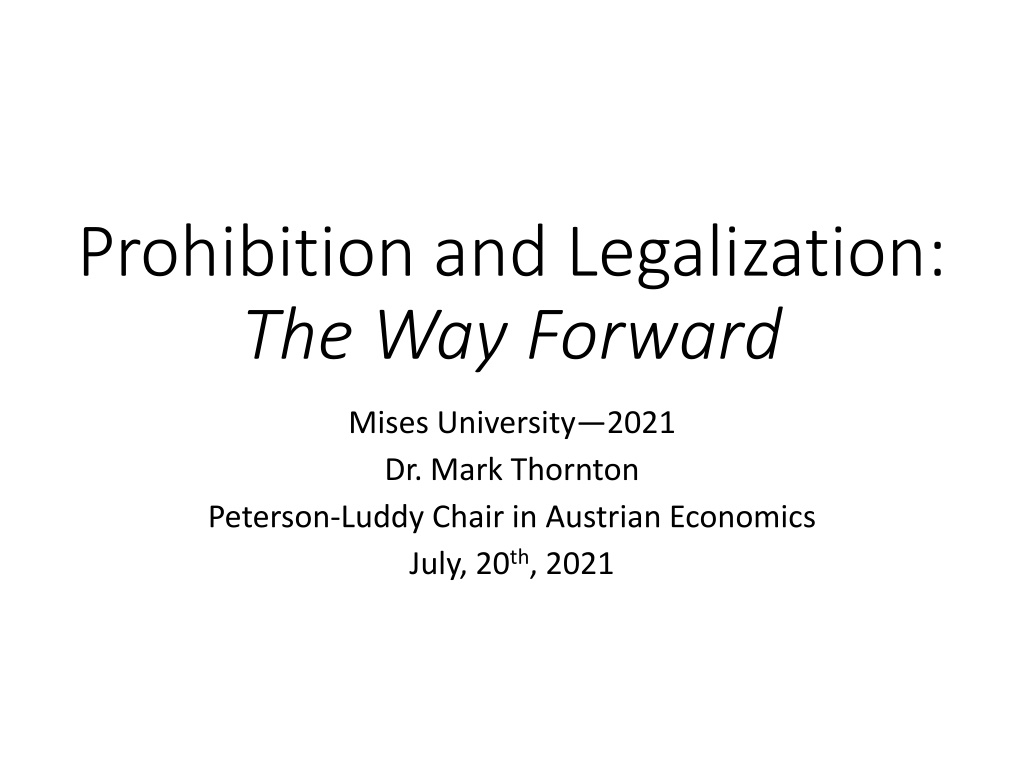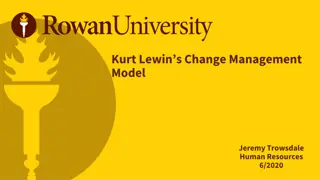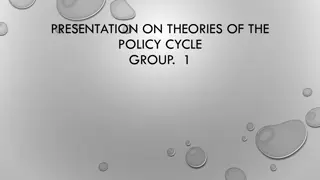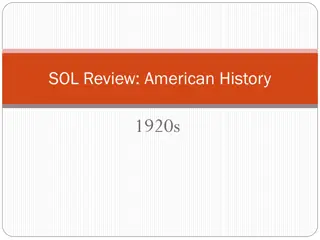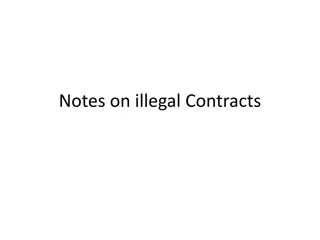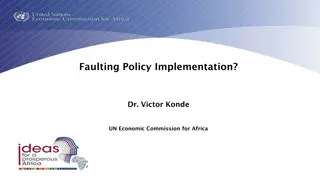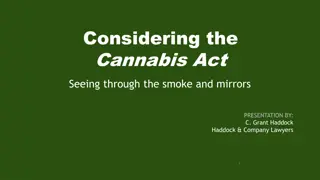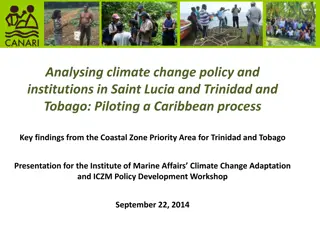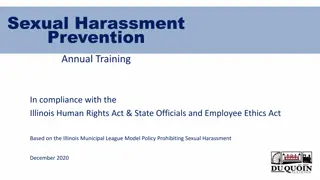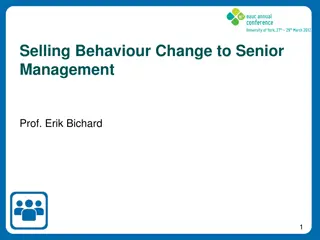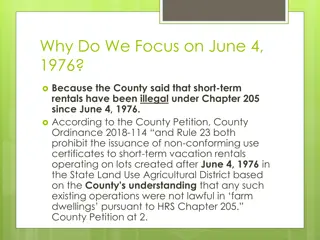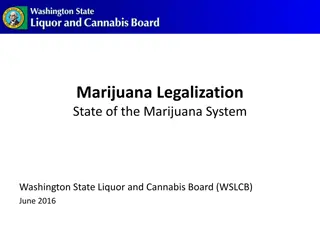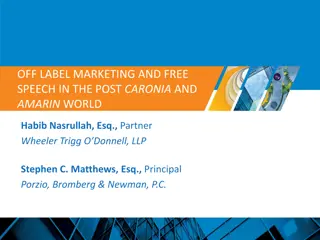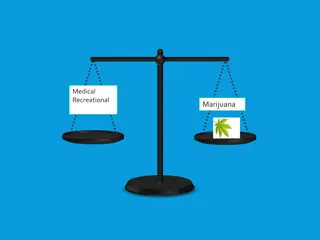Prohibition and Legalization: Lessons for Policy Change
Explore the journey from prohibition to legalization in the context of economics and policy change, delving into the impact of ideology, success of different policies, and the historical background of prohibition on narcotics, alcohol, and cannabis. Discover how prohibition has been influenced by ignorance, racism, and government propaganda, leading to crucial insights for societal progress.
Download Presentation

Please find below an Image/Link to download the presentation.
The content on the website is provided AS IS for your information and personal use only. It may not be sold, licensed, or shared on other websites without obtaining consent from the author. Download presentation by click this link. If you encounter any issues during the download, it is possible that the publisher has removed the file from their server.
E N D
Presentation Transcript
Prohibition and Legalization: The Way Forward Mises University 2021 Dr. Mark Thornton Peterson-Luddy Chair in Austrian Economics July, 20th, 2021
The Way Forward? How did we prohibition? How did we get legalization? What can we learn from this experience? Does it apply to other issues? We will concentrate on economics, but it should be stressed that the Austrian school has been focused on real world solutions. Austrians have a different approach, method, and result. Austrians general view ideology as a critical feature of social change.
Policy Success? Most policies issues (e.g., taxes, budgets, deficits, money, regulation, healthcare, welfare, etc.) have had minor victories or mostly significant worsening during the Austrian Revival. In the United States, socialism seems to be very popular. Policy change is driven by ideology and other factors. Ideology is a system of ideas and ideals, especially as the basis of economic or political theory and policy. The Way Forward = science and ethics = change the world. Prohibition is a policy where there has been some libertarian success, that is the 21stAmendment and the Marijuana Legalization movement now.
Prohibition Prior to Narcotics, Alcohol and Cannabis Prohibitions there was little in the way of medicine, a void filled by Patent Medicines and herbal remedies, including concoctions of opium, alcohol, and cannabis. Alcohol, including heavy consumption, was an integrated part of American life. The concept of addiction was only realized in the late 19thcentury. Prohibitionists targeted minorities and foreigners, not the drugs themselves. Generally, these drugs did not inflict enormous social problems.
Nave Model of Prohibition 60 50 40 Supply 30 Price Demand 20 Prohibition 10 0 Quantity
Prohibitionists and Economists Agree Prohibition reduces Supply Prohibition increases Price Prohibition decreases Quantity Demanded (Demand?) Therefore, Prohibition is beneficial(?) Addiction, Crime, Corruption, Violence, Health Problems, etc. Prohibition also increases Government Budget and Taxes How much to spend? (MC = MB) [cost benefit analysis] Both now recognize Corruption, Crime, Cost, etc.
Prohibition is the result of Ignorance, Racism, and Government Propaganda Harrison Narcotics Act (1914) Alcohol Prohibition (1920-1933) Marijuana Tax Act (1937) Reefer Madness (1936) Outrageous Claims about minorities WASPs easily fooled Marijuana Gateway Theory
Prohibition's Legal and Economic Framework No Rule of Law Violence to enforce contracts, sales territories Crime to finance addictions Bribery and Corruption Undermines Civil Society Stymies economic development in urban areas, Central American countries Finances terrorist groups
Iron Law of Prohibition Based on the Alchian-Allen Effect STGAO Good Apple =$1 Bad Apple =50 1GA=2BA Transport=$1/A $2GA, $1.50BA, 1GA=1.33BA Maine Lobster, Idaho Potato, Wine? Pot in S.A, HP=$10/lb., LP=$5/lb., 1HP=2LP Pot in S.C, HP=$1010/lp,LP=$1005/lp,1HP 1LP Stronger Prohibition = More potent drugs
Cannabis Legalization 1972 12% Today 65+& legalization, 90+% Medical Marijuana Medical = 40, DeCrim = 27, Legal 19 High Potency Legal Cannabis Problem? Cannabis $8-9 B Vs Hemp flowers and CBD $1.5-2 B Pc 6-7X Phf so 1.5 * 6 = so Qc = Qhf Average potency consumption has probably fallen, and consumption has shifted somewhat from harder drugs to these two products
Conclusions There are no socially desirable benefits from Prohibition, only costs. The costs associated with Prohibition are much larger than many people think. However, more and more people understand that Prohibition is completely counterproductive. More importantly, they understand that legalization would not be an utter disaster, but would actually address many social problems. This is the ideological shift that has taken place, which in turn, is changing policy at the state level. What about other issues? How do we stop the FED, the Empire, Au?
